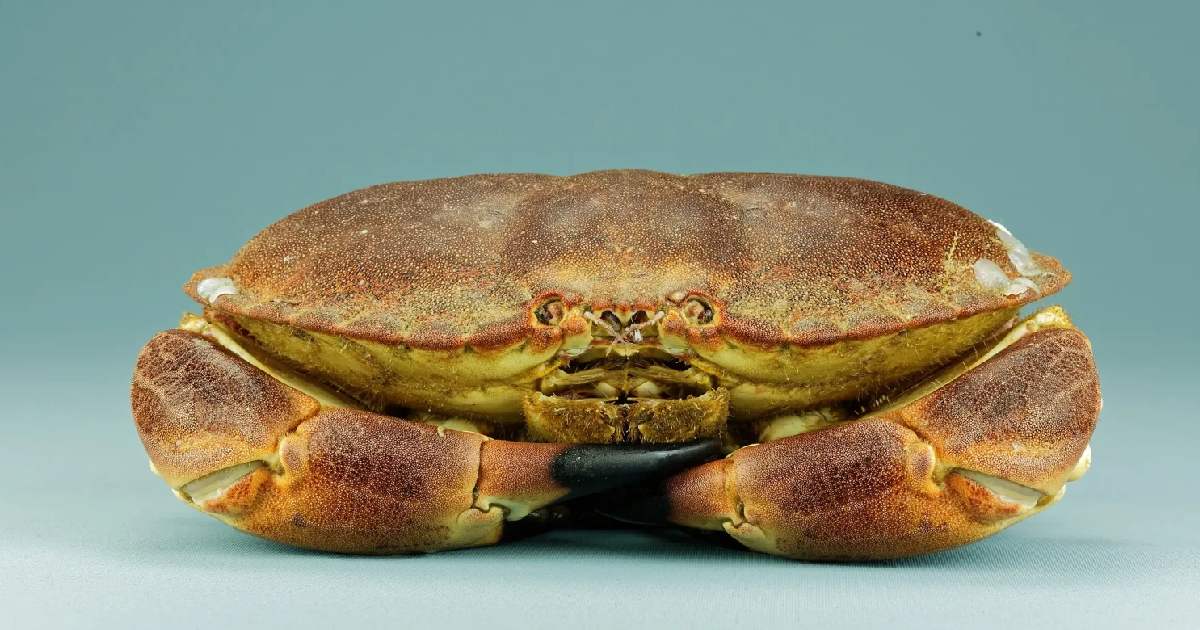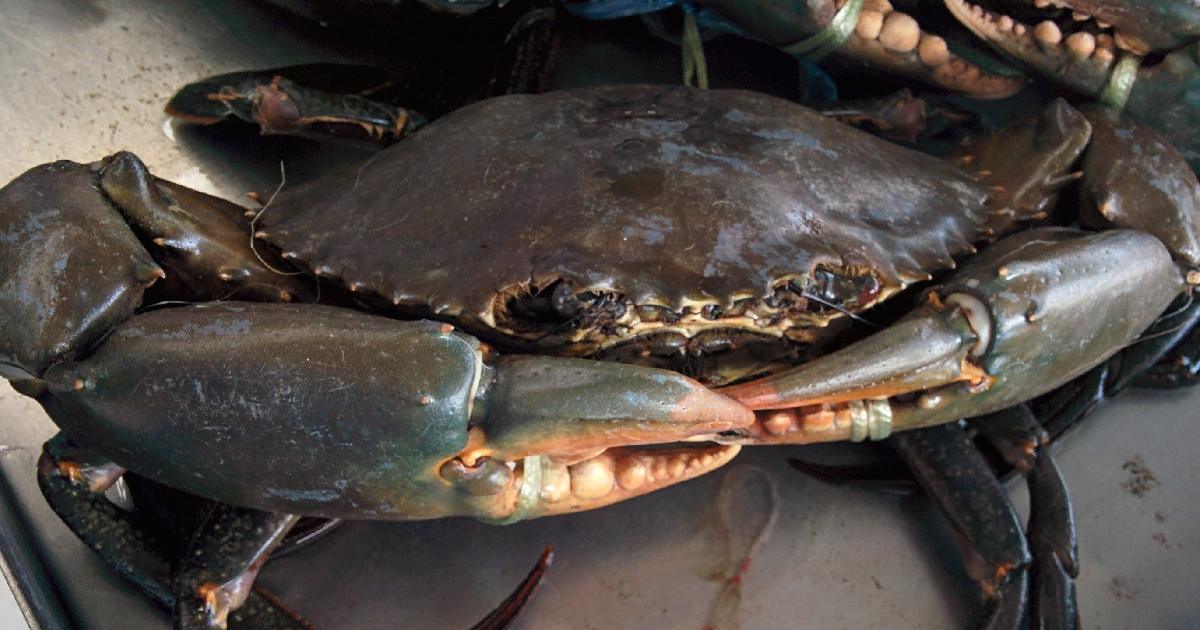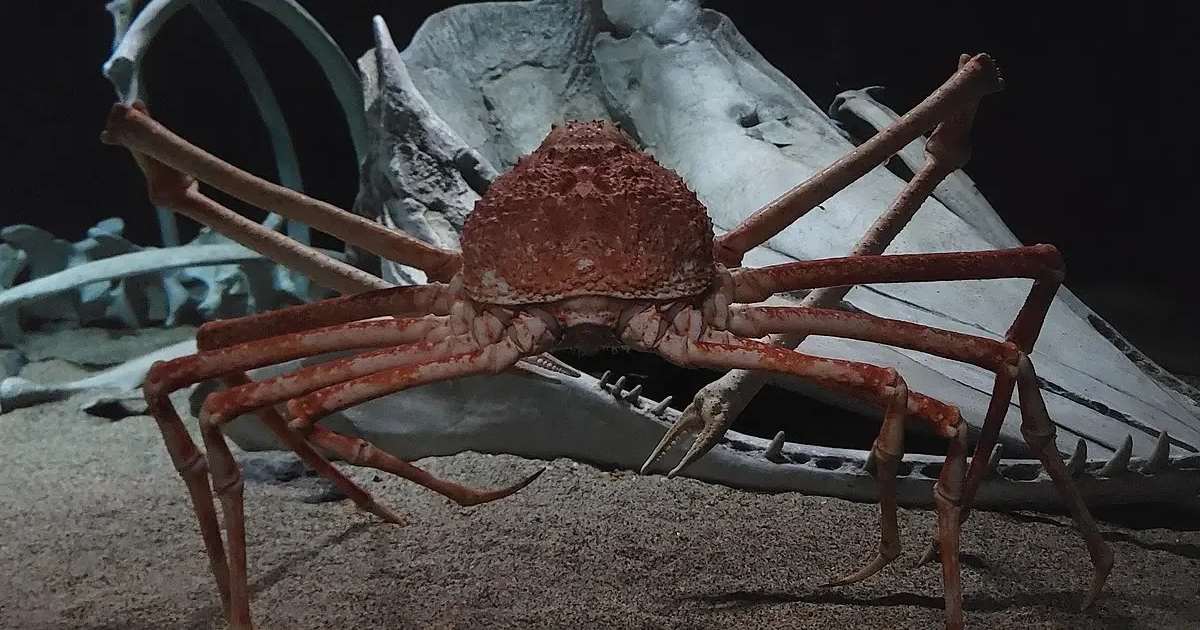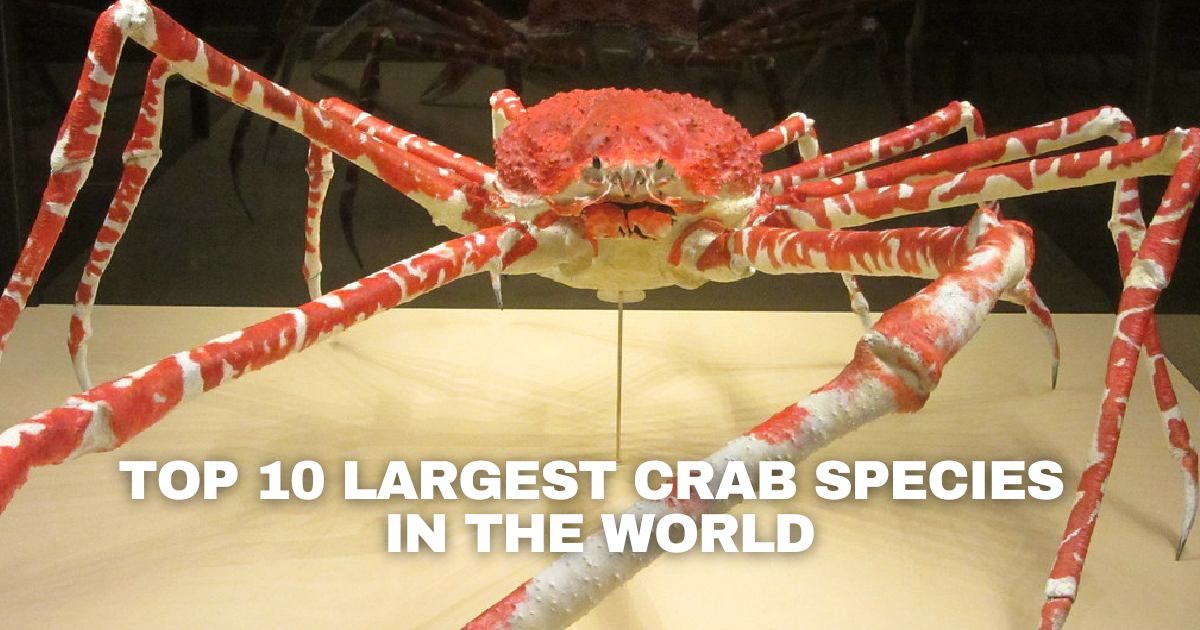Crabs are among the most intriguing creatures in the marine world. From the shores of tropical islands to the deep waters of the ocean, these fascinating crustaceans come in various shapes and sizes. Among them, some of the largest crab species in the world stand out for their immense size and unique characteristics. This article delves into the top ten largest crabs, shedding light on their habitats, behaviors, and the extraordinary features that make them remarkable. Join us as we explore giants like the Japanese spider crab, Tasmanian giant crab, and the formidable coconut crab.
10. Florida Stone Crab

- Size: Carapace width of 5 to 6.5 inches
- Scientific Name: Menippe mercenaria
- Key Feature: Powerful claws that can reach up to 5 inches
The Florida Stone Crab is notable for its strong, oversized claws, which are a delicacy in culinary circles. Found in the western North Atlantic Ocean, these crabs are primarily harvested for their claws, which can regenerate after being removed. This regenerative ability is vital for the sustainability of their populations.
Florida Stone Crabs prefer sandy or muddy substrates, often residing in burrows or crevices. They are opportunistic feeders, consuming a variety of organisms such as oysters, snails, and smaller fish. Conservation regulations are in place to manage their harvesting, ensuring that this species continues to thrive despite heavy fishing pressures.
9. Brown Crab

- Size: Carapace up to 8 inches wide
- Scientific Name: Cancer pagurus
- Key Feature: Commonly found in the North Atlantic Ocean
The Brown Crab, also known as the Edible Crab, is a well-known species in Europe. This crab is widely distributed in the North Atlantic Ocean, from Norway to Portugal. With its broad, robust carapace, the Brown Crab can weigh up to 3 kilograms (6.6 pounds).
Brown Crabs play a crucial role in their ecosystem as both predators and scavengers. They feed on mollusks, smaller crabs, and dead animals, contributing to the health of the marine environment. The species is also economically significant, being a popular seafood item in many countries. Efforts to manage their populations sustainably are critical to prevent overfishing.
8. Opilio Crab

- Size: Carapace width of up to 6.5 inches
- Scientific Name: Chionoecetes opilio
- Key Feature: Found in the Northwest Atlantic Ocean and North Pacific Ocean
Opilio Crabs, commonly known as Snow Crabs, are prized for their sweet, tender meat. These crabs inhabit cold waters, particularly in the Northwest Atlantic and North Pacific Oceans. They are a staple of the seafood industry, with large-scale fisheries dedicated to their sustainable harvest.
Snow Crabs are known for their long, slender legs and relatively small bodies. They typically dwell at depths ranging from shallow coastal waters to over 200 meters. As opportunistic feeders, they consume a variety of marine organisms, including fish, clams, and other crustaceans. Their populations are managed carefully to ensure a balance between commercial demand and ecological sustainability.
7. Blue Crab

- Size: Carapace up to 9 inches wide
- Scientific Name: Callinectes sapidus
- Key Feature: Found in the Atlantic Ocean and Gulf of Mexico
The Blue Crab is renowned for its striking blue claws and sweet, succulent meat. This species is native to the western Atlantic Ocean and the Gulf of Mexico, playing a significant role in the local seafood industry, especially in regions like the Chesapeake Bay.
Blue Crabs are highly adaptable, thriving in various habitats from brackish estuaries to open coastal waters. They are aggressive predators and scavengers, feeding on a diverse diet that includes fish, plants, and dead animals. Conservation measures, including habitat restoration and fishing regulations, are crucial to maintaining their populations amidst pressures from overfishing and pollution.
6. Dungeness Crab

- Size: Carapace up to 8 inches wide
- Scientific Name: Metacarcinus magister
- Key Feature: Found in the Pacific Northwest
Dungeness Crabs are highly valued for their tender, flavorful meat, making them a favorite among seafood enthusiasts. These crabs are found along the Pacific Northwest coast, from Alaska to California, inhabiting sandy and muddy bottoms.
Named after the port of Dungeness in Washington State, these crabs are a significant part of the local fishing industry. They are benthic feeders, preying on small fish, shrimp, and other invertebrates. The Dungeness crab fishery is one of the most sustainably managed, ensuring that the species remains abundant and that their populations are not overexploited.
5. Red King Crab

- Size: Carapace up to 10 inches wide
- Scientific Name: Paralithodes camtschaticus
- Key Feature: Also known as Alaskan King Crab
The Red King Crab, also known as the Alaskan King Crab, is a true giant of the Bering Sea. These crabs are highly prized for their large size and succulent meat, making them a luxury seafood item. Red King Crabs can weigh up to 12 kilograms (28 pounds) and have a leg span of up to 1.8 meters (5.9 feet).
These crabs are typically found in deep, cold waters but migrate to shallower areas during mating season. Their populations have been affected by overfishing, climate change, and unsustainable fishing practices. Strict regulations on harvesting and conservation efforts are essential to protect this species and ensure its continued availability.
4. Giant Mud Crab

- Size: Carapace up to 12 inches wide
- Scientific Name: Scylla serrata
- Key Feature: Found in the Indo-Pacific region
The Giant Mud Crab, also known as the Mangrove Crab, is a prominent species in the Indo-Pacific region. These crabs are known for their large size and powerful claws, which they use to capture prey and defend themselves. They inhabit mangrove swamps, estuaries, and other coastal habitats.
Giant Mud Crabs are highly valued in Asian cuisine, particularly in dishes like Singaporean chili crab. They are also ecologically important, playing a role in maintaining the health of mangrove ecosystems. Overfishing and habitat loss pose significant threats to their populations, highlighting the need for conservation measures to protect this species.
3. Coconut Crab

- Size: Leg span up to 1 meter
- Scientific Name: Birgus latro
- Key Feature: World’s largest land crab
Coconut Crabs are the largest land-dwelling arthropods, often referred to as the largest land crabs. These crabs can weigh up to 4.1 kilograms (9 pounds) and have a leg span of up to 1 meter (3.3 feet). They are renowned for their ability to crack open coconuts with their powerful pincers, hence their name.
Native to the Pacific and Indian Oceans, Coconut Crabs are typically found on islands with limited human populations. They are omnivorous, feeding on fruits, nuts, dead animals, and other crabs. Despite their formidable size and strength, they are vulnerable to habitat destruction and overharvesting, leading to protective measures in certain areas to ensure their survival.
2. Tasmanian Giant Crab

- Size: Carapace up to 18 inches wide
- Scientific Name: Pseudocarcinus gigas
- Key Feature: Known for impressive size
The Tasmanian Giant Crab, found in the cold waters around Australia and New Zealand, is one of the heaviest crab species in the world. Male Tasmanian Giant Crabs can weigh up to 13 kilograms (29 pounds) and have a carapace width of up to 46 centimeters (18 inches). Females are smaller but equally impressive.
These crabs have a long lifespan and grow slowly, making them particularly susceptible to overfishing. They inhabit deep waters and are known for their distinctive asymmetrical claws, with one claw being significantly larger. Conservation efforts are essential to ensure the sustainability of this species since Tasmanian giant crabs live a long life span, and their slow growth rate makes population recovery challenging.
1. Japanese Spider Crab

- Size: Carapace up to 16 inches wide, leg span up to 12.1 feet
- Scientific Name: Macrocheira kaempferi
- Key Feature: The World’s largest marine crab
The Japanese Spider Crab is the undisputed giant of the crab world. With a leg span reaching up to 3.7 meters (12.1 feet) and a weight of up to 19 kilograms (42 pounds), it is the world’s largest crab species. These crabs are native to the waters around Japan, typically found at depths of 50 to 600 meters.
Japanese Spider Crabs are omnivores, consuming both plants and dead animals. They also serve as scavengers, cleaning up the ocean floor. Despite their size and formidable appearance, they are vulnerable to overfishing. Conservation efforts, including restocking fisheries with juvenile crabs, are crucial to protect this iconic species and ensure its continued presence in the marine ecosystem.
Conclusion
The largest crab species in the world are not only remarkable for their size but also for their unique adaptations and significant roles in their ecosystems. From deep-sea giants like the Japanese Spider Crab and the terrestrial powerhouse Coconut Crab to other species not mentioned, such as snow crab, each species contributes to the diversity and richness of our natural world.
As human activities continue to impact marine and coastal environments, it is vital to implement and support conservation measures that protect these incredible creatures. By doing so, we can ensure that future generations have the opportunity to marvel at the world’s largest crabs and appreciate the intricate balance of life in our oceans.
Frequently Asked Questions (FAQs)
How big are Tasmanian giant crabs?
Tasmanian giant crabs (Pseudocarcinus gigas) can reach impressive sizes, with males weighing up to 13 kilograms (29 pounds) and having a carapace width of up to 46 centimeters (18 inches). Females are smaller but still substantial. These crabs are among the largest in the world, making them a fascinating subject for marine biologists and seafood enthusiasts alike.
How big was the ancient gigantic crab?
The ancient gigantic crab, known as the “Jaekelopterus rhenaniae,” was a prehistoric sea scorpion that lived about 390 million years ago. It is estimated to have reached lengths of up to 2.5 meters (8.2 feet). This enormous arthropod is often considered one of the largest arthropods to have ever existed, highlighting the incredible diversity of ancient marine life.
What is the largest king crab ever caught?
The largest king crab ever caught is typically a Red King Crab (Paralithodes camtschaticus), also known as the Alaskan King Crab. These crabs can weigh up to 12 kilograms (28 pounds) and have a leg span of up to 1.8 meters (5.9 feet). The largest recorded specimens have approached these maximum sizes, making them true giants of the Bering Sea.
Which is bigger, king crab or spider crab?
The Japanese Spider Crab (Macrocheira kaempferi) is generally larger than the King Crab. Spider crabs can have a leg span of up to 3.7 meters (12.1 feet) and weigh up to 19 kilograms (42 pounds). In comparison, King Crabs, like the Red King Crab, have a maximum leg span of about 1.8 meters (5.9 feet) and can weigh up to 12 kilograms (28 pounds), making the spider crab the larger of the two.
What is the biggest crab ever recorded?
The biggest crab ever recorded is the Japanese Spider Crab (Macrocheira kaempferi). This species holds the title of the world’s largest crab, with leg spans reaching up to 3.7 meters (12.1 feet) and weights of up to 19 kilograms (42 pounds). Found in the waters around Japan, these crabs are known for their long legs and massive size, making them a marvel of marine biology.

